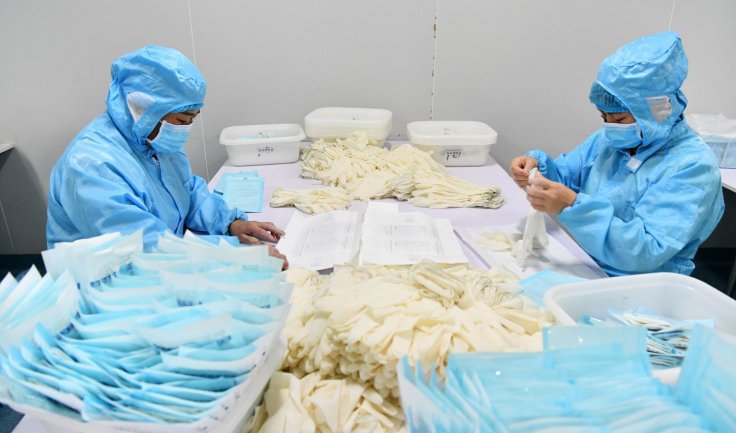The coronavirus is spreading deeper into Latin America, a region home to about 8.5 percent of the world's population that many expects believe could be among the worst affected by COVID-19.
Heavily reliant on commodity exports, tourism and remittances, Latin America's fragile economies and vulnerable populations are likely to suffer. JPMorgan expects a 2020 GDP contraction exceeding two percent across the region and over three percent in Colombia, Brazil and Mexico. Below, Reuters examines World Bank data that shine a light on just how vulnerable Latin America may be to the virus' spread.
AGE

Although much remains unknown about COVID-19, the respiratory disease caused by the new coronavirus, it appears older people are more vulnerable. Latin America has a younger population compared to some other parts of the world. Less than nine percent of its population is aged 65 and above, compared with 20 percent in the European Union and 16 percent in North America. In Sub-Saharan Africa, three percent of the population is aged 65 and over.
Meanwhile, 67 percent of Latin America's population is aged between 15-64, a slightly higher share than North America (66 percent), the EU (65 percent) and the world as a whole (65 percent).
HEALTHCARE
Latin America dedicates about 9% of its gross domestic product to healthcare, while the EU allocates 10 percent. North America spends 16.58 percent of its GDP on healthcare. On a per capita basis, Latin America spends nearly $700 on healthcare, compared with $3,211 in the EU and $9,326 in North America. Latin America has 2.2 physicians per 1,000 people, slightly more than the rest of the world (1.5), but below the EU and North America, which have 3.6 and 2.6 doctors per 1,000 people, respectively.
By comparison, East Asia and the Pacific have 1.6 doctors for every 1,000 people. Latin America has 4.7 nurses and midwives per 1,000 people, versus 3.4 per 1,000 in the rest of the world. The EU has 8.6, while North America has 8.7 per 1,0000. Compared with other regions, Latin America has relatively few hospital beds per 1,000 people - 2.2 compared with 5.6 in the EU. The rest of the world has 2.7 per 1,000 people.
In Latin America, about 14 percent of deaths are caused by either communicable diseases, maternal, prenatal and nutrition conditions. Although that percentage is low compared with South Asia, where 27 percent of deaths are attributed to such causes, it is well below the five percent in the EU and North America.
COVID-19 appears to pose a greater threat to people with pre-existing health conditions. In Latin America, nearly 10 percent of people between 20 and 79 have diabetes, slightly below the 10.5 percent in North America. In the EU, just 6.3 percent of that age group have diabetes, while in East Asia and the Pacific, 8.2 percent do.
Nearly 15 percent of Latin Americans aged 15 or over smoke, compared with about a fifth in North America and more than a quarter in the EU and East Asia and the Pacific. Although the risks of coronavirus to people with HIV are not known, Latin America's HIV infection prevalence for people aged 15-49 is the same as that of North America - 0.4 percent.
SOCIAL ISSUES
Nearly 4.5 percent of Latin America's population lives on less than $1.90 a day, compared with 10 percent across the rest of the world, 1.3 percent in East Asia and the Pacific, and 7.2 percent in the Middle East and North America. In Sub-Saharan Africa, 42.3 percent of the population lives on under $1.90 a day.
Around a fifth of Latin America's urban population lives in slums; in East Asia and the Pacific, just over a quarter does. Worldwide, nearly a third of city-dwellers lives in slums. More than half of the urban population in sub-Saharan Africa lives in shanties.
Although Latin America has some of the world's largest cities, including Sao Paulo and Mexico City, the region has a population density of just 32 people per square kilometre. In the EU, the population density is 121 people/sq. km, while in East Asia and the Pacific it is 95/sq. km. In North America, there are 20 people per square kilometre.









